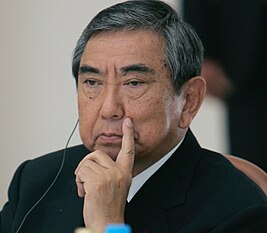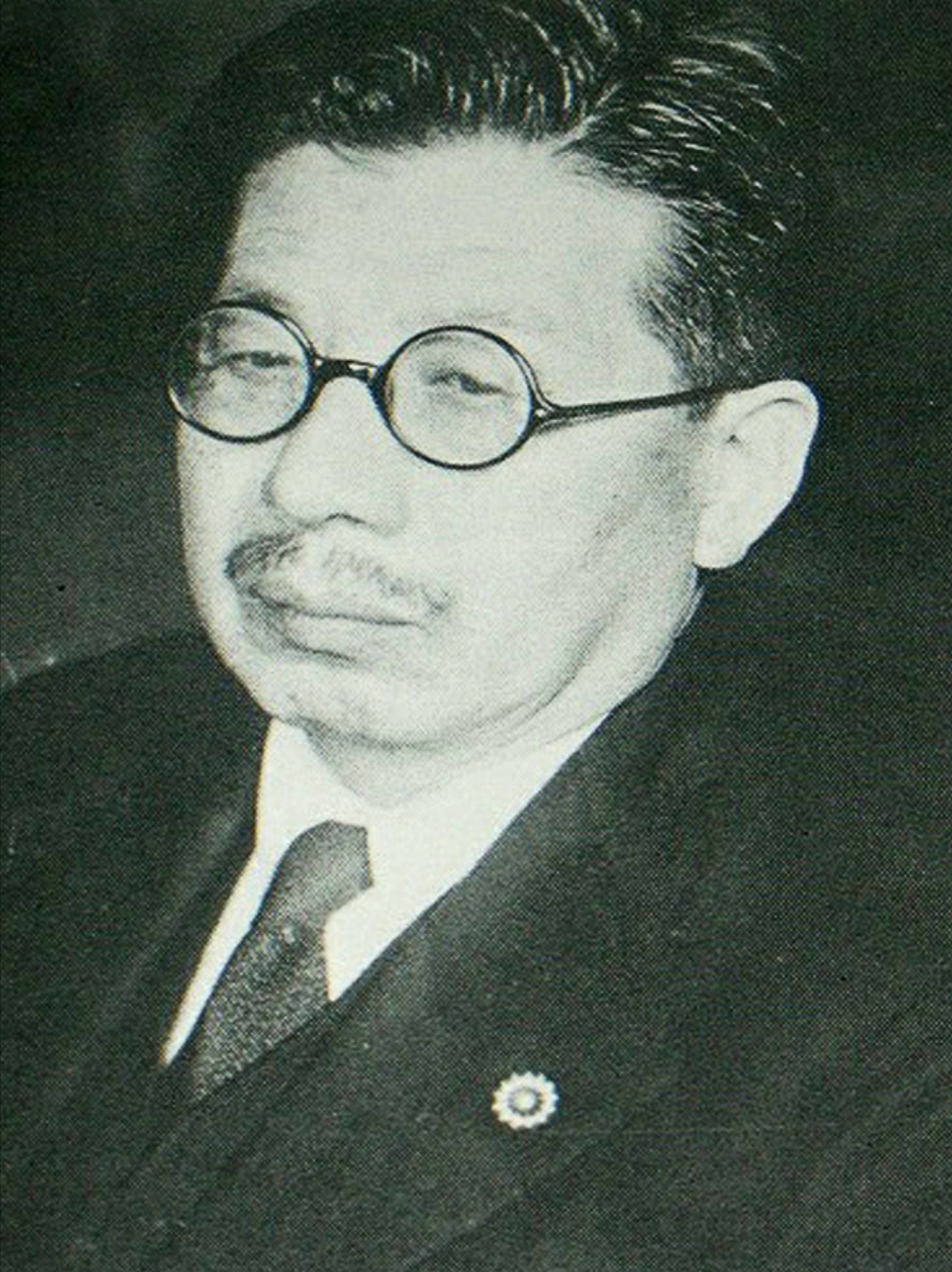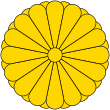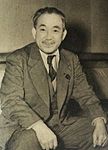
The politics of Japan are conducted in a framework of a multi-party bicameral parliamentary representative democratic constitutional monarchy whereby the Emperor is the ceremonial head of state and the Prime Minister is the head of government and the head of the Cabinet, which directs the executive branch.

The Liberal Democratic Party of Japan, frequently abbreviated to LDP or Jimintō (自民党), is a conservative political party in Japan.

The Social Democratic Party, also known as the Social Democratic Party of Japan and previously as the Japan Socialist Party, is a political party that at various times advocated the establishment of a socialist Japan until 1996. Since its reformation and name change in 1996, it has defined itself as a social-democratic party.

The New Party Sakigake, also known as the New Harbinger Party, was a political party in Japan that broke away from the Liberal Democratic Party (LDP) on 22 June 1993. The party was created by Masayoshi Takemura. The party was centrist, and had many reformist and even moderate ecological elements. The theoretical leader was Shusei Tanaka. Yukio Hatoyama and Naoto Kan also took part but later moved to the Democratic Party of Japan.

The New Frontier Party was a political party in Japan founded in December 1994. As a merger of several small parties, the party was ideologically diverse, with its membership ranging from moderate social democrats to liberals and conservatives. The party dissolved in December 1997, with Ichirō Ozawa's faction forming the Liberal Party and other splinters later joining the Democratic Party of Japan in April 1998.
The Rightist Socialist Party of Japan was a Japanese political party that existed between 1948 and 1955. It was a centre-left political party, which adopted a policy of moderate social-democracy.
The Leftist Socialist Party of Japan was a Japanese political party that existed between 1948 and 1955.

House of Councillors elections were held in Japan on July 8, 1956 electing half the seats in the House plus two vacant seats in the other half. The Liberal Democratic Party won the most seats, but failed to win a majority. It was the first national election under the 1955 System, approximately a two party system of Ichirō Hatoyama's Liberal Democratic Party (LDP) that was created in the "conservative merger" of 1955 and Suzuki Mosaburō's reunified Japan Socialist Party (JSP). The later dominant LDP failed to win a majority.
The 1955 system (55年体制), also known as the 'one-and-a-half party system', refers to the party system in Japan from 1955 to 1993 in which the Liberal Democratic Party (LDP) successively held majority government while the major opposition the Japan Socialist Party (JSP) was incapable of forming an alternative. The terms 1955 system and one-and-a-half system are credited to Junnosuke Masumi who describes the system of 1955 as "a grand political dam into which the history of Japanese politics surge.” The years of Japan under 1955 regime witnessed the economic miracle, but also the dominance of the ruling party in the Diet, with an undergirded tight connection between the bureaucracy and the business sector. Due to a series of LDP scandals and the 1992 burst of Japanese asset price bubble, LDP lost its majority in the House of Representatives in the 1993 general election.

Elections for the Japanese House of Councillors were held in Japan on July 12, 1998.

Elections for the Japanese House of Councillors were held in Japan in 1995.

The 23rd general elections of members of the House of Representatives, the lower house of the National Diet of Japan, were held on 25 April 1947. The Japan Socialist Party won 144 of the 466 seats, making it the largest party in the House of Representatives following the election. Voter turnout was 67.9%. It was the last election technically held under the Meiji Constitution in preparation for the current Constitution of Japan which became effective several days later on 3 May 1947. The upper house of the Diet was also elected by the people under the new constitution, the first ordinary election of members of the House of Councillors had been held five days before.
Changi Single Member Constituency is a defunct single member constituency in Changi and eastern outer islands such as Pulau Ubin, Singapore; from 1951 elections to 1997 elections which most of the part had absorbed into Siglap ward in East Coast GRC while the remaining were to form as Changi-Simei ward in Aljunied GRC, only to be part of East Coast GRC 5 years later before the 2001 general elections.
The Liberal Socialist Party (LSP) is a defunct political party in the politics of Singapore. It was formed in the 1950s from the merger of the Singapore Progressive Party (SPP) and the Democratic Party (DP), the latter not to be confused with the Singapore Democratic Party (SDP). The merger occurred in order to consolidate their relatively compatible and similar aims, that of gradual and nonradical progressivism implementing liberal policies.
Hokkaidō 2nd district was an SNTV four-member electoral district for the House of Representatives, the lower house of the National Diet of Japan, between 1947 and 1996, last used in the lower house election of 1993. Located in the prefecture (-dō) of Hokkaidō, it consisted of the cities (-shi) of Asahikawa, Rumoi, Wakkanai, Shibetsu, Nayoro, Furano and all other municipalities in the subprefectures (-shichō) Kamikawa, Sōya and Rumoi. With the return to single-member districts in the 1990s electoral reform, the district became the 7th district. In 2003 the 7th district was abolished and the area that was once the 2nd district was divided amongst the 6th, 10th and 12th districts of Hokkaidō.

The First Hashimoto Cabinet was formed in January 1996 under the leadership of Ryutaro Hashimoto, following the resignation of Tomiichi Murayama as Prime Minister of Japan and head of the coalition between the Liberal Democratic Party, Japan Socialist Party and New Party Sakigake. The smaller Socialist party relinquished the leadership of the government to the LDP, which was the largest party in the Diet and Hashimoto assumed the premiership, becoming the first LDP Prime Minister since August 1993.















